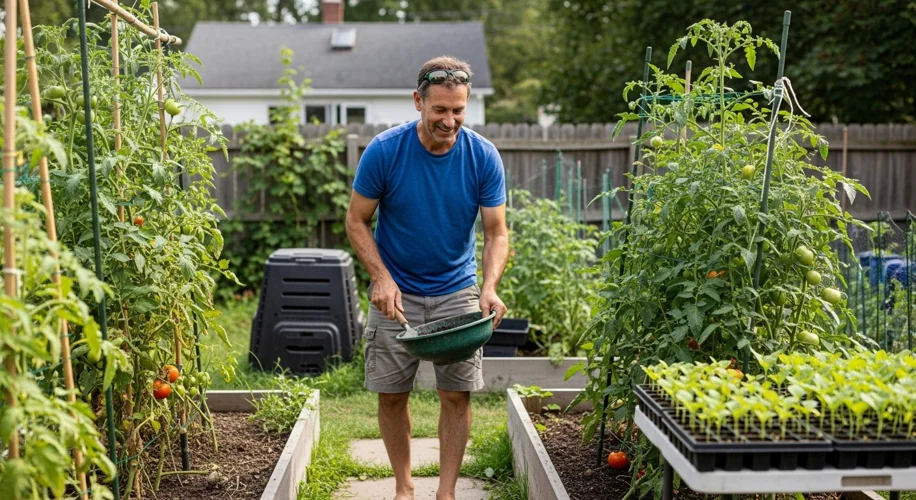Hey everyone! Elias here. Summer is in full swing, and if your garden is anything like mine, it’s a busy, beautiful (and sometimes a little chaotic) place.
My passion has always been turning simple soil into a source of delicious food and joy. Today, I want to dive into some core aspects of gardening that can make a huge difference, whether you’re just starting out or have been at it for years: soil health, pest control, seed starting, and composting.
The Foundation: Healthy Soil
Think of soil as the pantry for your plants. If it’s depleted, your plants won’t thrive. For me, the journey to better soil started with understanding what’s actually in it. A simple soil test can tell you a lot about pH levels and nutrient deficiencies. But beyond tests, it’s about feeding the soil biology. I’ve found that adding compost regularly is the single best thing you can do. It improves soil structure, drainage, and nutrient availability. Cover cropping in the off-season is another practice that’s been a game-changer for preventing erosion and adding organic matter.
Dealing with Pests, Naturally
No one likes pests munching on their hard-earned harvest. Instead of reaching for harsh chemicals, I focus on building a resilient garden ecosystem. This often means attracting beneficial insects like ladybugs and lacewings – they’re the garden’s natural pest control squad! Planting companion plants like marigolds or basil can also deter certain pests. For tougher issues, I rely on organic solutions like neem oil or insecticidal soap, always applied carefully and at the right time of day.
Starting Seeds: The Promise of Spring (or Fall!)
Starting seeds indoors is one of the most rewarding parts of gardening for me. It’s like holding a little bit of future flavor in your hands. The key is providing the right environment: good quality seed-starting mix, consistent moisture, and adequate light. A heat mat can speed up germination for many plants, and grow lights are essential for strong, stocky seedlings. Don’t be afraid to experiment with different varieties; that’s how you find new favorites!
Composting: Turning Scraps into Gold
My compost bin is probably my favorite feature in the yard. It’s where kitchen scraps and garden waste get a second life as nutrient-rich food for my plants. The basic recipe is simple: balance your ‘greens’ (like vegetable peels and grass clippings) with your ‘browns’ (like dried leaves and shredded paper). Turning the pile occasionally helps it break down faster. A well-managed compost pile significantly reduces waste and provides an endless supply of amazing soil amendment. It truly closes the loop in a sustainable garden.
These practices work hand-in-hand. Healthy soil leads to stronger plants that are more resistant to pests. Composting feeds that soil. And starting seeds gives you control over what you grow. It’s a continuous cycle, and the results – both in the garden and on the plate – are incredibly satisfying.
Happy gardening!

